Imagine a dish that’s both luxurious and effortless, perfect for those nights when you want to treat your family to something special without spending hours in the kitchen. Broiled lobster tails are just that—a gourmet delight that’s surprisingly easy to prepare. The lobster meat, known for its tender and juicy texture, is complemented by a rich, buttery sauce infused with the perfect amount of garlic. A squeeze of fresh lemon adds a bright, citrusy note, balancing the richness of the butter. This dish not only looks impressive but also fills your home with a warm, inviting aroma that promises a delightful meal. It’s a foolproof way to add a touch of elegance to any family dinner.
Why You’ll Love This Recipe
- Quick, easy, and ready in just 15 minutes.
- Rich, buttery, and subtly seasoned for a gourmet, luxurious taste.
- Perfect for special occasions or a fancy weeknight dinner.
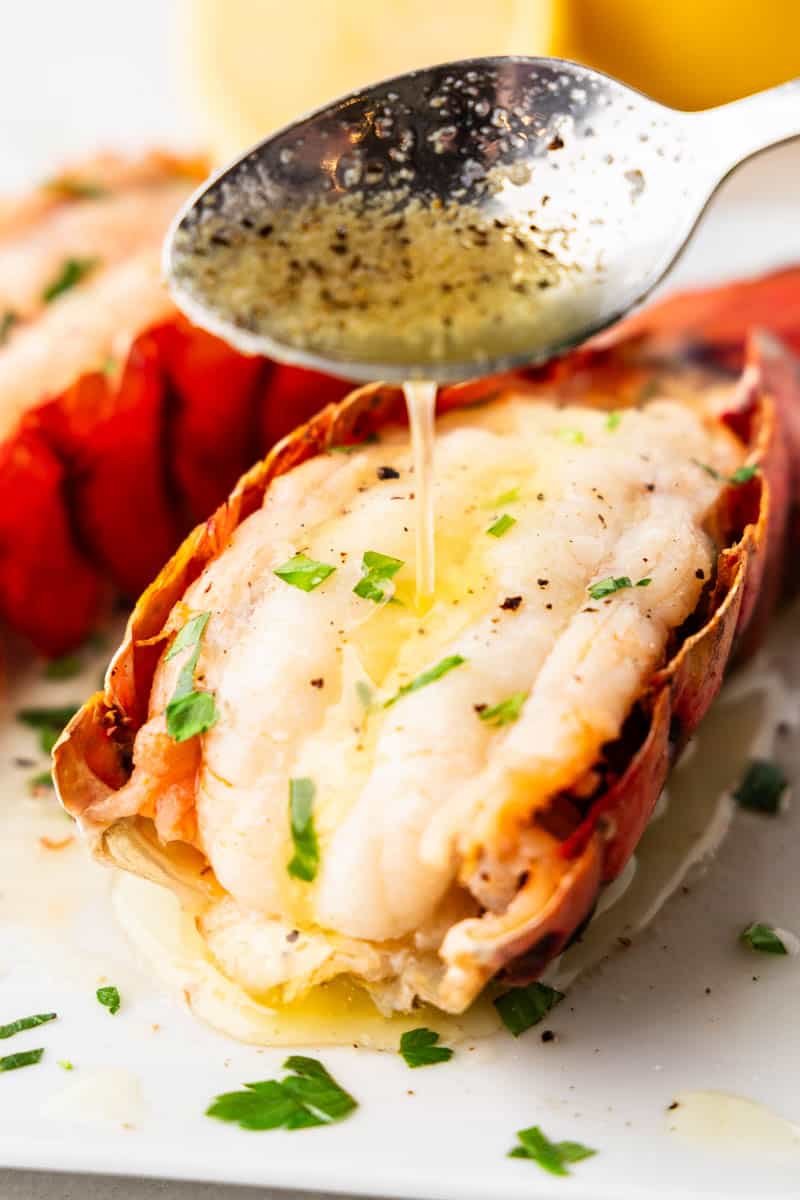
Broiled Lobster Tail Ingredients & Substitutions
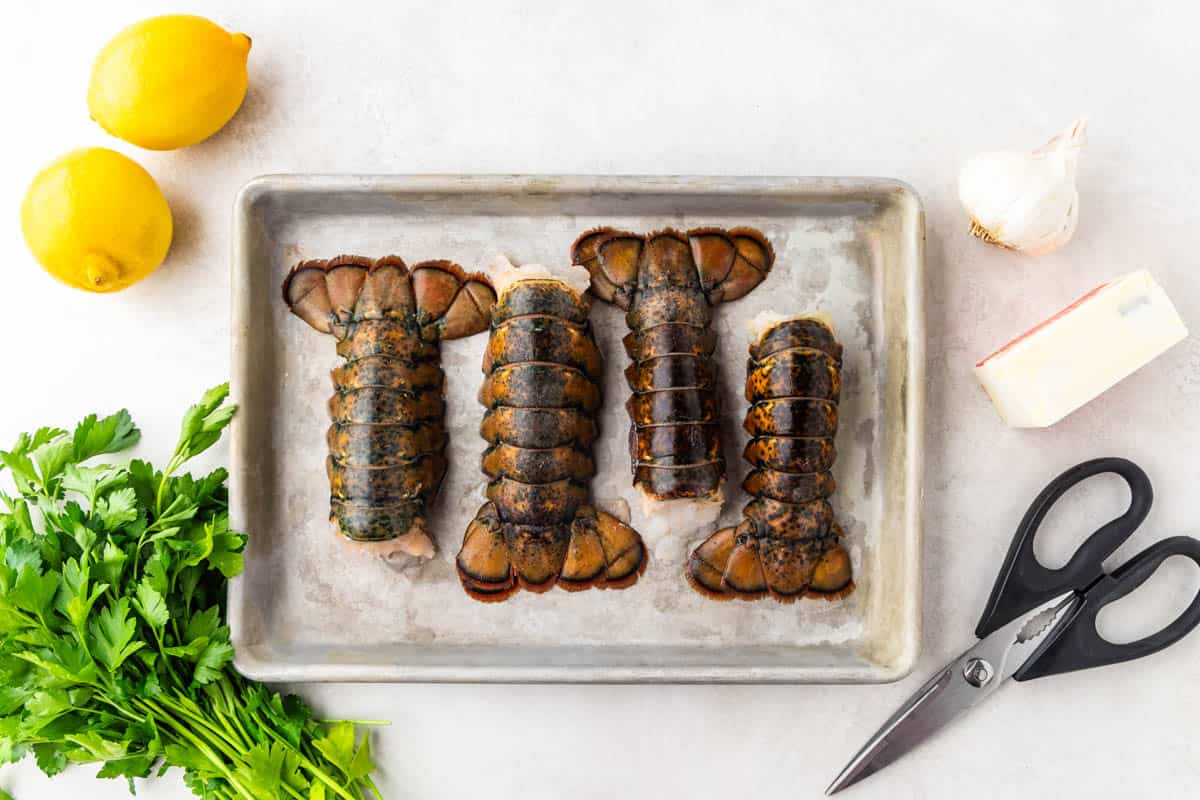
Every ingredient in this recipe plays a crucial role in bringing out the best in your lobster tails. Here’s a brief look at each one:
- Lobster Tails: The star of the dish, providing a naturally sweet and tender meat.
- Salted Butter: Adds richness and depth, enhancing the lobster’s flavor. Substitute with unsalted butter if needed – with a pinch of extra salt.
- Minced Garlic: Offers a hint of pungency and warmth. Substitute with garlic powder in a pinch.
- Lemon: Adds a fresh, citrusy zing, cutting through the butter’s richness. Use fresh squeezed for best results.
Frequently Asked Questions
Yes! Lobster tails need to be thawed for even cooking, preferably using the refrigerator overnight – up to 24 hours. For a quicker method, place your lobster tails into an airtight plastic bag, squeeze out all the air, and immerse the tails in cold water in a sink or large bowl. Replace the cold water every 30 minutes until thawed, which will take 30-60 minutes.
Yes, lobster tails need to be cut open for even cooking. You can use a sharp knife, or kitchen shears. Kitchen shears provide the easiest way to cut through the shells. Don’t worry if you cut the meat along the way, this will butterfly the meat and make it cook more evenly.
For the best taste and texture, it’s recommended to broil them just before serving.
You can go by looks. Raw lobster is translucent so you can see through it. When cooked, lobster turns opaque and white. You’ll know it is cooked through when it is white. When lobster is overcooked, it becomes chewy and rubbery. You can always use a thermometer to ensure 100% accuracy. Lobster should be cooked to an internal temperature of 140 degrees Fahrenheit.
Absolutely! Grilling adds a smoky flavor, just watch closely to avoid overcooking.
Visual Guide to Making Broiled Lobster Tails
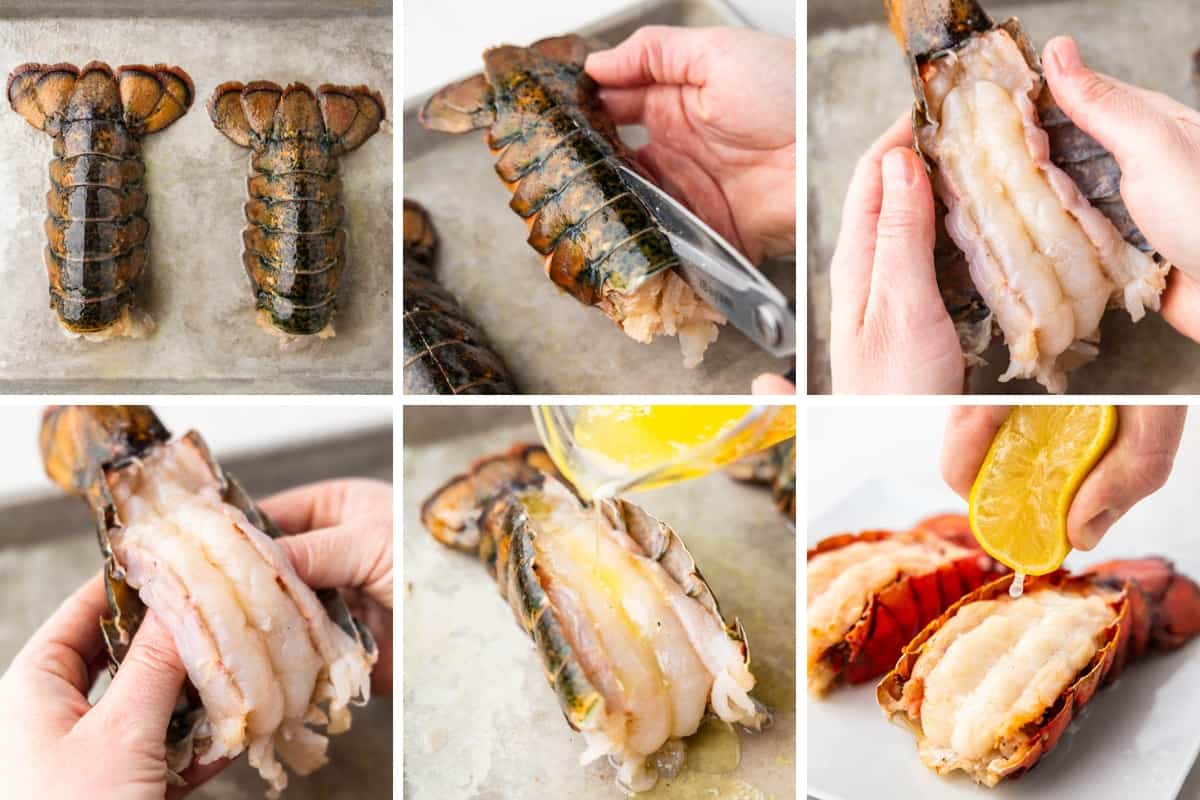
Choosing & Preparing Your Lobster
Selecting the best lobster tails is key. Fresh tails should have a bright, clean shell with no discoloration. Frozen tails are a great alternative; just ensure they’re from a reputable source. Size matters, too – smaller tails are often more tender.
Preparing lobster tails for broiling is a simple yet crucial part of the cooking process. Proper preparation ensures the lobster cooks evenly and presents beautifully on the plate. Here’s a step-by-step guide to prepare your lobster tails:
- Thawing the Lobster Tails: If using frozen lobster tails, it’s essential to thaw them thoroughly for even cooking. Place the tails in the refrigerator overnight or submerge them in cold water for a few hours until completely thawed.
- Rinsing and Drying: Once thawed, rinse the lobster tails under cold water to clean off any brine or debris. Pat them dry with paper towels to remove excess moisture, which helps in achieving a better texture when broiled.
- Cutting the Shell: Lay the lobster tail on its back with the shell facing up. Using a pair of kitchen shears, cut through the top of the shell starting from the end closest to the tail, stopping just before the fin. Avoid cutting into the meat as much as possible – the goal is to slice through the shell and the top portion of the meat.
- Butterflying the Tail: Carefully spread the shell open where you made the cut. Gently lift the meat out of the shell, keeping it attached at the end. Lay the meat on top of the shell, effectively ‘butterflying’ it. This not only makes for a more attractive presentation but also allows the meat to cook more evenly.
- Removing the Vein: Like shrimp, lobster tails have a vein that runs along the top of the meat. If visible, remove it by making a shallow cut along the top of the meat and gently pulling it out. This step is essential for both presentation and texture.
- Preparing for Broiling: Once butterflied, lightly brush the lobster meat with melted butter or your seasoning mixture. This not only adds flavor but also helps in achieving a golden-brown color when broiled.
- Arranging on the Baking Sheet: Place the prepared lobster tails on a baking sheet lined with parchment paper or lightly greased foil. Make sure the tails are spaced out evenly to ensure uniform cooking.
Make Broiled Lobster Tails a Complete Meal With…
Broiled lobster tails pair wonderfully with a variety of sides. For a full meal, consider serving them with vegetables, a fresh salad, or garlic bread. They’re perfect for family dinners, celebrations, or even a cozy dinner date at home.
Troubleshooting
- Lobster tails seem tough: Overcooking is often the culprit. Next time, reduce the broiling time.
- Not enough flavor: Adjust the seasoning to your taste, adding more salt, pepper, or garlic as needed.
- Butter burning under the broiler: Place the lobster tails further from the heat source and monitor closely.
Tips From the Chef
- Thaw properly: If using frozen lobster, thaw them completely in the refrigerator.
- Don’t overcook: Keep an eye on the lobster tails, as they broil quickly.
- Serve immediately: Lobster tastes best when it’s hot and fresh out of the oven.
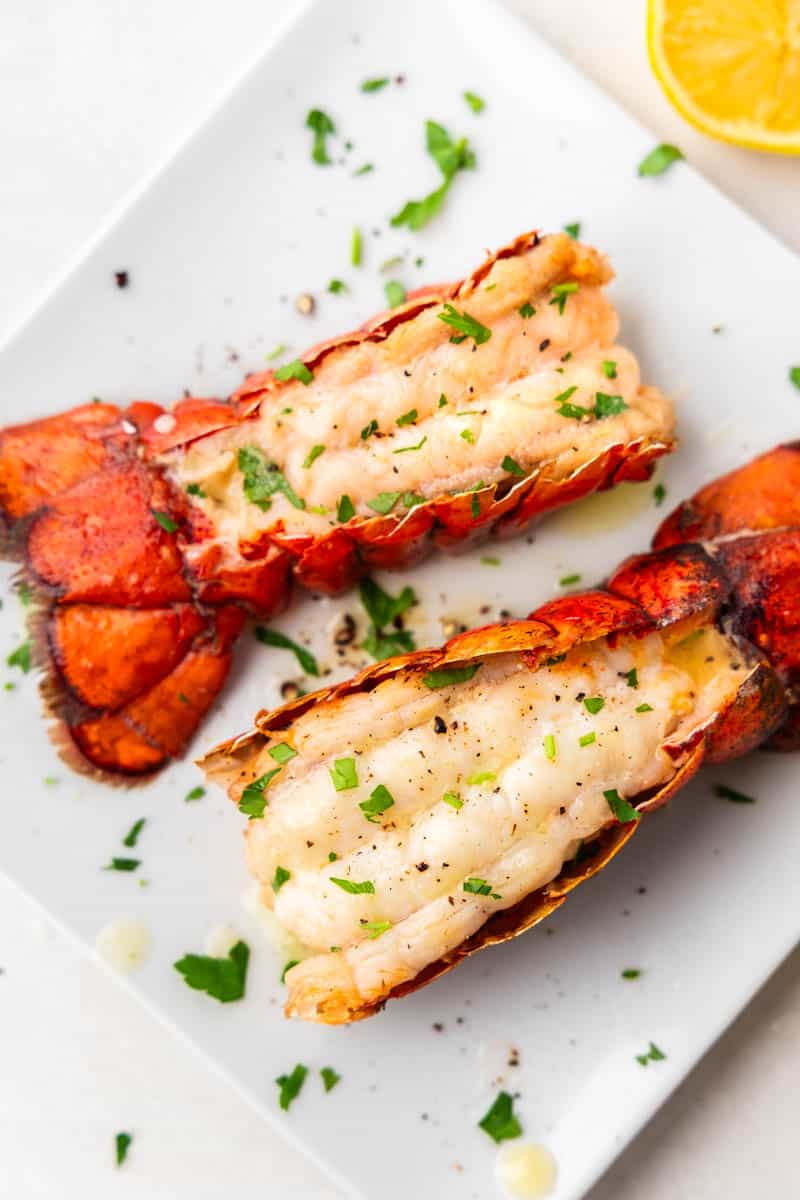
Lobster Tail Readiness Indicators
Color:
- Raw Lobster: Before cooking, raw lobster meat is usually a translucent, whitish-gray color.
- Cooked Lobster: Look for a stark change in color – cooked lobster meat turns opaque and white with a hint of a pinkish-red hue on the shell.
Texture:
- Raw Lobster: The texture of raw lobster meat is somewhat jelly-like and soft.
- Cooked Lobster: When done, the meat becomes firmer and more resilient to the touch. If it feels mushy or overly soft, it’s likely undercooked.
Firmness:
- Test for Firmness: Gently press the thickest part of the lobster meat with a utensil. If it feels firm with a slight give, it’s likely done. Overcooked lobster meat becomes very firm and rubbery.
Internal Temperature:
- Use a Thermometer: The most accurate way to check doneness is by using a food thermometer. The internal temperature should reach 140°F to ensure the lobster is fully cooked.
Storage & Reheating Instructions
Storage Instruction
- Cooling Down: Allow the broiled lobster tails to cool to room temperature. Do not leave them out for more than 2 hours to prevent bacterial growth.
- Refrigerating:
- Place the cooled lobster tails in a shallow airtight container or wrap them tightly with aluminum foil or plastic wrap.
- Store in the refrigerator where they will be good for up to 2 days.
Reheating Instructions
Reheating lobster tails requires gentle heat to prevent them from becoming rubbery.
- Thawing Frozen Lobster Tails:
- If you have frozen your cooked lobster tails, thaw them in the refrigerator overnight before reheating.
- Oven Reheating:
- Preheat your oven to 350°F.
- Place the lobster tails in a baking dish and add a small amount of water or butter to the dish to keep the lobster moist during reheating.
- Cover the dish with aluminum foil to prevent the lobster from drying out.
- Heat for about 10 minutes or until the lobster is heated through. The internal temperature should reach 140°F.
- Stovetop Reheating:
- Heat a skillet on low heat and add a small amount of butter or water.
- Place the lobster tails in the skillet and cover with a lid.
- Gently heat for about 5-8 minutes, turning once, until they are warmed through.
- Avoiding the Microwave:
- It’s not recommended to reheat lobster tails in the microwave as it can make the meat tough and chewy.
More Seafood Recipes
Watch the video below where Rachel will walk you through every step of this recipe. Sometimes it helps to have a visual, and we’ve always got you covered with our cooking show. You can find the complete collection of recipes on YouTube, Facebook Watch, or our Facebook Page, or right here on our website with their corresponding recipes.

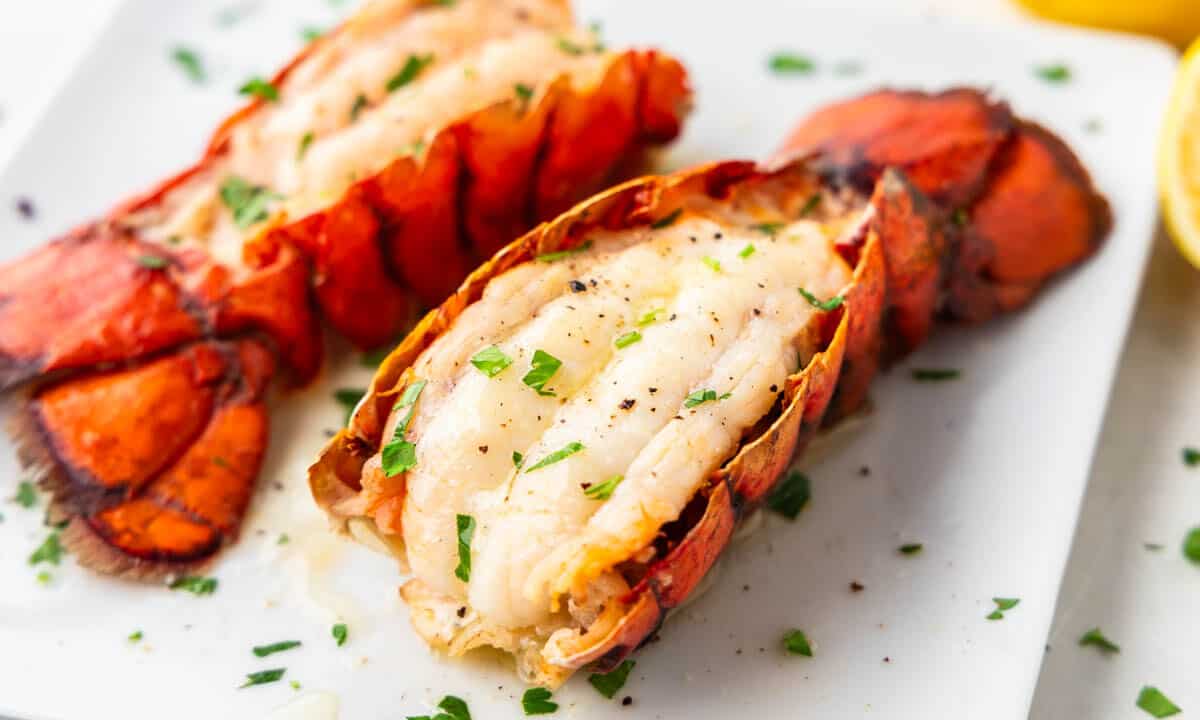

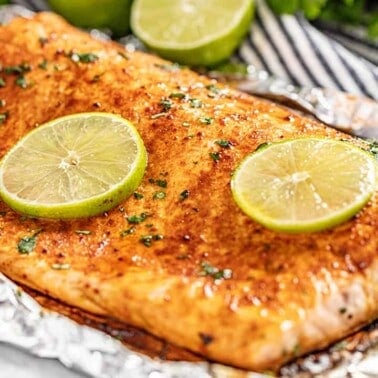
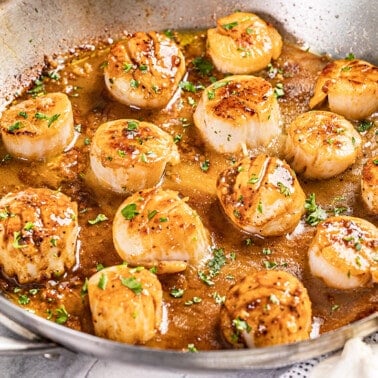
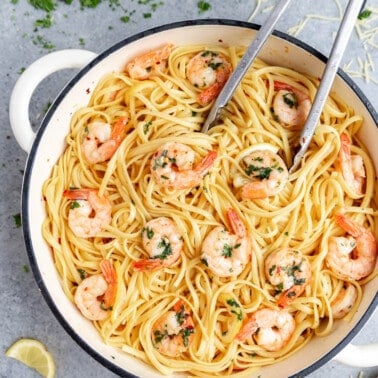
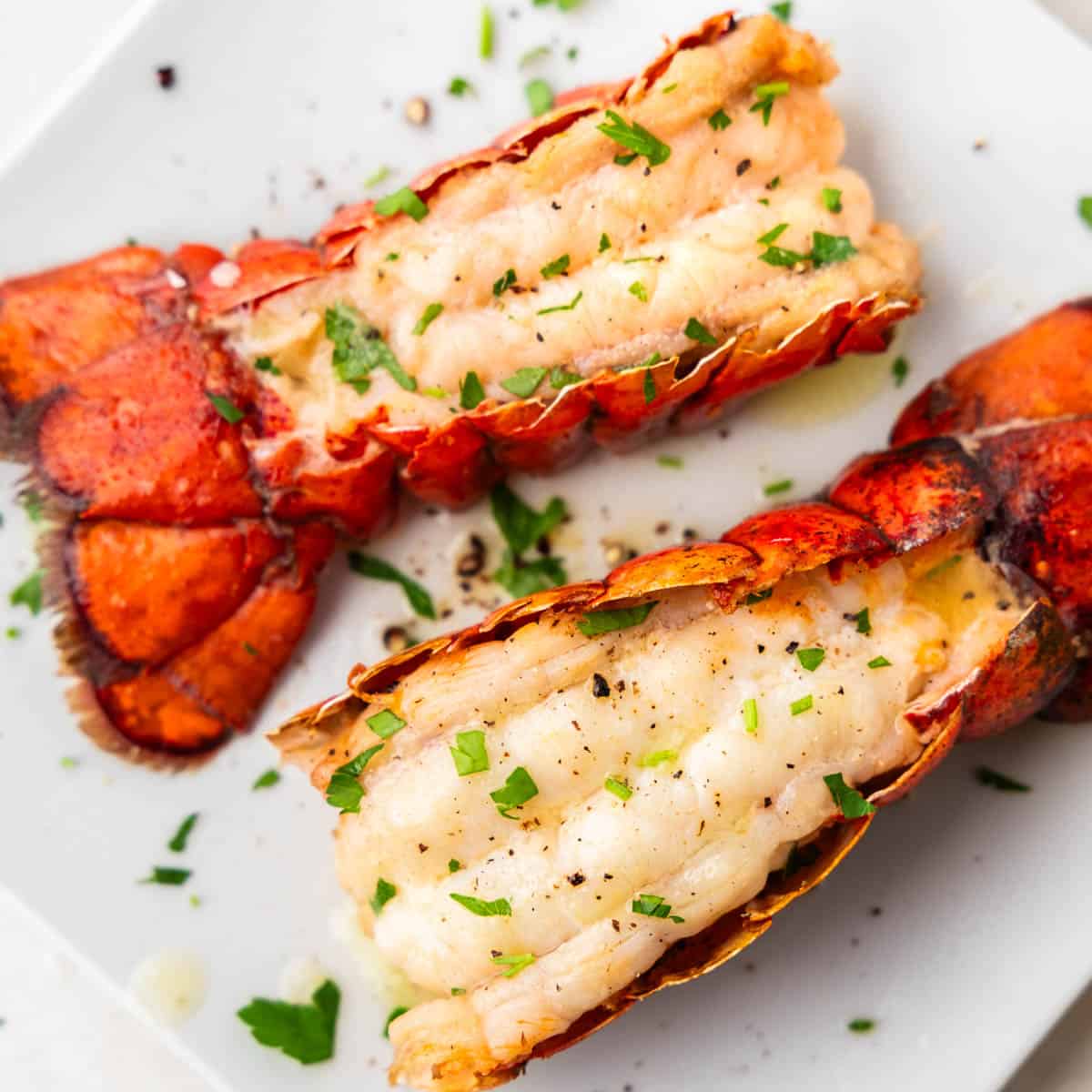

Do you broil the lobster on low or high setting? Thanks.
Did you ever find out? Wondering the same…
Really quick and easy. My husband loves it. Likes to dip each bite in the garlic butter.
Absolutely delicious!
Great
I was a little nervous until I saw your video. Thanks for making it painless and easy. I also like the way that the video was to the point. Stick to that. To the point.
JW
So simple and fast. If you watch the video that accompanies the recipe, she says to feel free to add whatever youd like to add some flat or to the recipe. I will try that next time!
Very informative. Great video.
Very Cool. Easy to follow which I did right after I watched. Thanks.
You failed to mention an important step and that is to remove the the intestine vein down the back of the tail! Sometimes it is white but usually it is black!
if it’s anything like crawfish take the center tail fin flip it backward then twist and pull the sand vein out. or after cutting the shell you should be able to see and remove.
Hi Rachel! Your recipes are wonderful. They’re simple and easy to prepare and the final results are great. I checked few and decided to subscribe so I’ll have something new to experiment. Thanks for all the good info.?